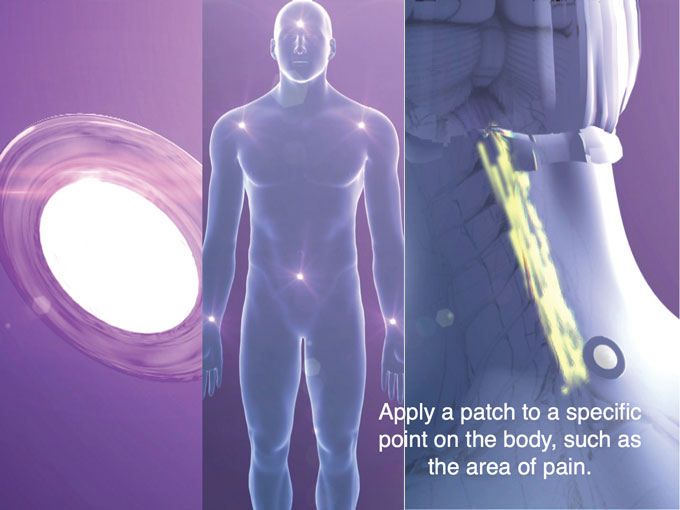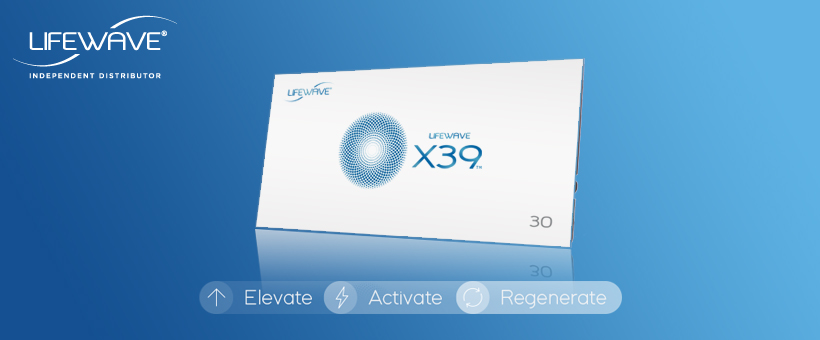Are you curious to learn how infrared light therapy stacks up against other modalities? Look no further! In this article, we’ll explore the benefits of infrared light therapy and compare its effectiveness to other treatment options. Whether you’re seeking relief from chronic pain or looking for a non-invasive method to improve your overall well-being, we’ll help you understand the advantages and drawbacks of infrared light therapy compared to other popular modalities. So sit back, relax, and let’s discover how infrared light therapy compares to other options on the market.
1. What is Infrared Light Therapy?
1.1 Definition
Infrared light therapy, also known as phototherapy or low-level light therapy (LLLT), is a non-invasive treatment that utilizes specific wavelengths of infrared light to provide therapeutic benefits to the body. This therapy involves the exposure of targeted areas to infrared light, which is a type of electromagnetic radiation with longer wavelengths than visible light.
1.2 Mechanism of action
The mechanism of action behind infrared light therapy lies in its ability to penetrate deep into the tissues of the body. When the infrared light is absorbed by the cells, it stimulates specific biological responses. This includes the activation of mitochondria in the cells, which helps to enhance cellular energy production and promote tissue repair and regeneration.
Additionally, infrared light therapy has been found to have anti-inflammatory effects, improve blood circulation, and increase the production of collagen, a key protein important for skin health and wound healing.
1.3 Benefits
There are numerous benefits associated with infrared light therapy. One of the primary advantages is its ability to effectively alleviate pain. The penetrating nature of the infrared light enables it to reach deep into the muscles and joints, providing relief from various types of pain, including muscle aches, joint pain, and arthritis.
Infrared light therapy has also shown promise in promoting wound healing. By stimulating cellular activity and increasing blood circulation to the wounded area, it can hasten the healing process and reduce the risk of complications.
Furthermore, this therapy has been found to aid in muscle recovery, making it a favored treatment among athletes and fitness enthusiasts. The increased circulation and cellular activity induced by the infrared light can help reduce muscle soreness and accelerate the repair of damaged muscle fibers.
Moreover, infrared light therapy has been used effectively for skin rejuvenation. The stimulation of collagen production and improvement in blood circulation can result in improved skin tone, reduction of fine lines and wrinkles, and enhanced overall skin health.
Lastly, infrared light therapy has been found to have positive effects on conditions such as fibromyalgia, sports injuries, and even certain neurological disorders. Its non-invasive nature and lack of substantial side effects make it an attractive option for many individuals seeking alternative therapeutic modalities.
2. Other Modalities of Therapy
2.1 Traditional Heat Therapy
Traditional heat therapy, such as the use of hot packs or hot water bottles, is a widely used modality for pain relief and relaxation. This therapy involves the application of heat to the affected area, which promotes blood flow, relaxes muscles, and provides temporary relief from pain and stiffness.
However, traditional heat therapy mainly targets superficial tissues and does not penetrate as deeply as infrared light therapy. Infrared light therapy, on the other hand, can reach deeper layers of tissue, making it more effective for providing long-lasting pain relief and promoting healing.
2.2 Laser Therapy
Laser therapy, also known as low-level laser therapy, is another modality that utilizes specific wavelengths of light for therapeutic purposes. Like infrared light therapy, laser therapy aims to stimulate cellular activity and enhance tissue repair.
However, there are some key differences between these two therapies. Laser therapy uses a focused, coherent beam of light, whereas infrared light therapy utilizes a broader spectrum of light. The intensity of laser therapy also tends to be higher, allowing for precise targeting of specific areas. Infrared light therapy, on the other hand, offers a larger coverage area and is often used for more widespread conditions or larger treatment areas.
2.3 Ultrasound Therapy
Ultrasound therapy is a modality commonly used for musculoskeletal conditions and pain management. It involves the use of high-frequency sound waves that penetrate the tissues, providing deep heat and promoting tissue healing.
While both ultrasound therapy and infrared light therapy can deliver therapeutic heat to the tissues, they differ in their primary mechanisms of action. Ultrasound therapy achieves its therapeutic effects primarily through the delivery of mechanical energy and thermal effects, whereas infrared light therapy focuses on the stimulation of cellular activity through the exposure of targeted tissues to specific wavelengths of light.
2.4 Electrical Stimulation Therapy
Electrical stimulation therapy involves the application of electrical currents to the body for therapeutic purposes. This modality has diverse applications, ranging from pain management to muscle strengthening and wound healing.
While electrical stimulation therapy offers its unique benefits, such as muscle contraction and pain relief, it primarily targets neuromuscular tissue rather than promoting overall tissue healing and repair. Infrared light therapy, on the other hand, targets tissues on a cellular level, stimulating activity and facilitating repair processes.
2.5 Cryotherapy
Cryotherapy, also known as cold therapy, involves the application of cold temperatures to the body. This therapy is commonly used for pain management, reducing inflammation, and promoting recovery.
In contrast to infrared light therapy, which uses heat to promote healing, cryotherapy utilizes cold temperatures to achieve its therapeutic benefits. While both modalities have their distinct advantages, they can also be used in combination for certain conditions, where alternating between heat and cold therapy can enhance the therapeutic effects.
3. Efficacy and Effectiveness
3.1 Comparison of healing rates
Studies comparing the healing rates of infrared light therapy to other modalities have shown promising results. In one study published in the Journal of Clinical Laser Medicine & Surgery, researchers compared the effectiveness of infrared light therapy, laser therapy, and ultrasound therapy in treating chronic wounds. They found that wounds treated with infrared light therapy had the fastest healing rates, outperforming both laser and ultrasound therapy.
3.2 Comparative studies
Several comparative studies have been conducted to evaluate the efficacy of infrared light therapy against other modalities. For example, a study published in Photomedicine and Laser Surgery compared the effects of infrared light therapy and electrical stimulation therapy on pain management in individuals with knee osteoarthritis. The results showed that infrared light therapy provided superior pain relief and functional improvement compared to electrical stimulation therapy.
3.3 Long-term effects
Long-term effects of infrared light therapy have been explored in various studies. Research published in the Journal of Cosmetics, Dermatological Sciences and Applications demonstrated the long-term benefits of infrared light therapy for skin rejuvenation. Participants who underwent regular infrared light therapy sessions showed significant improvements in skin elasticity, wrinkle reduction, and overall skin quality even after the treatment period ended.
3.4 Patient satisfaction
Patient satisfaction is an important factor when evaluating the effectiveness of any therapy. Infrared light therapy has garnered positive feedback from individuals who have undergone this treatment. Many report significant pain relief, improved mobility, and overall satisfaction with the therapeutic outcomes.
4. Safety Profile
4.1 Side effects and risks
Infrared light therapy is generally considered safe with minimal side effects. Some individuals may experience mild warmth or redness in the treated area, but these effects are temporary and usually subside shortly after the treatment.
4.2 Contraindications
While infrared light therapy is safe for most individuals, certain contraindications should be considered. It is not recommended for individuals with active malignancies or those who are pregnant. Additionally, individuals with sensitive skin or those who are photosensitive should exercise caution and consult with a healthcare professional before undergoing infrared light therapy.
4.3 Precautions
It is crucial to follow proper usage guidelines and precautions when using infrared light therapy devices. Protective eyewear should be worn to shield the eyes from the bright light emitted by some devices. Furthermore, it is important to adhere to the recommended treatment durations and avoid overexposure to the infrared light.
5. Treatment Applications
5.1 Pain management
Infrared light therapy has shown significant effectiveness in managing various types of pain. Whether it’s acute musculoskeletal pain or chronic conditions such as arthritis, infrared light therapy can provide relief by reducing inflammation, improving blood circulation, and promoting tissue repair.
5.2 Wound healing
The ability of infrared light therapy to enhance cellular activity and blood circulation makes it a valuable modality for wound healing. It can accelerate the healing process, minimize scarring, and reduce the risk of infection in both acute and chronic wounds.
5.3 Muscle recovery
Athletes and individuals involved in physical activities often turn to infrared light therapy for muscle recovery. By increasing blood flow, reducing inflammation, and enhancing cellular repair, it helps alleviate muscle soreness, promote tissue healing, and optimize recovery.
5.4 Skin rejuvenation
Infrared light therapy has gained popularity in the field of aesthetics for its ability to rejuvenate the skin. It can improve collagen production, enhance skin elasticity, reduce the appearance of fine lines and wrinkles, and enhance overall skin quality and texture.
5.5 Arthritis and joint pain
Arthritis and joint pain are significant sources of discomfort for many individuals. Infrared light therapy can provide relief to those suffering from joint pain by reducing inflammation, improving joint mobility, and promoting tissue repair in the affected areas.
6. Accessibility and Convenience
6.1 Cost comparison
When comparing the cost of infrared light therapy to other modalities, it is generally a cost-effective option. While the initial investment in a home device or the cost of professional treatments may vary, the long-term benefits and convenience offered by infrared light therapy often outweigh the financial considerations.
6.2 Availability
Infrared light therapy is becoming increasingly accessible to individuals. It is available in various forms, including handheld devices for home use, professional-grade devices at clinics and wellness centers, and even infrared saunas. This widespread availability allows individuals to conveniently access this therapy option.
6.3 Portability
The portability of infrared light therapy devices is another significant advantage. Many modern devices are compact and lightweight, allowing users to bring them along while traveling or use them in the comfort of their own homes. This portability enhances the accessibility and convenience of this therapy.
6.4 Self-administration
Infrared light therapy can be self-administered, making it a convenient option for individuals who prefer managing their treatments independently. Home-use devices are designed with user-friendly interfaces and comprehensive instructions, enabling individuals to receive therapy on their own schedule.
7. Scientific Research and Evidence Base
7.1 Clinical trials
Numerous clinical trials have been conducted to evaluate the efficacy and safety of infrared light therapy. These trials have explored its effectiveness in various applications, including pain management, wound healing, and skin rejuvenation. The positive results obtained from these trials contribute to the growing body of scientific evidence supporting the use of infrared light therapy.
7.2 Meta-analyses and systematic reviews
Meta-analyses and systematic reviews of multiple studies have been conducted to provide a comprehensive analysis of the effectiveness of infrared light therapy. These analyses allow researchers to draw conclusions based on a larger pool of data, enhancing the credibility of the findings and supporting the use of infrared light therapy in clinical practice.
7.3 Published studies and case reports
In addition to clinical trials and meta-analyses, numerous published studies and case reports have documented the efficacy of infrared light therapy. These studies contribute to the evidence base by providing real-world examples of the therapeutic benefits observed in individuals who have undergone this treatment.
8. Professional Recommendations and Guidelines
8.1 Medical associations
Several medical associations have recognized the therapeutic benefits of infrared light therapy and provided recommendations for its use. For example, the American Physical Therapy Association acknowledges the potential of infrared light therapy in pain management and tissue repair, particularly in musculoskeletal conditions.
8.2 Therapist perspectives
Therapists, such as physiotherapists and sports medicine professionals, often incorporate infrared light therapy into their treatment plans. Their firsthand experience and positive feedback on the efficacy of this modality further validate its use and provide guidance for its implementation in clinical practice.
8.3 Integrative medicine approach
Integrative medicine combines conventional medical treatments with evidence-based alternative therapies. Many practitioners in the field of integrative medicine recommend and utilize infrared light therapy as part of their comprehensive treatment protocols due to its proven efficacy and non-invasive nature.
9. Limitations and Considerations
9.1 Targeted treatment areas
Infrared light therapy is most effective when the targeted treatment area is exposed directly to the light source. Treating larger areas or areas obstructed by clothing may limit the penetration and effectiveness of the therapy.
9.2 Depth of penetration
Infrared light therapy may have limitations in terms of the depth of penetration. While it can reach the deeper layers of tissue compared to traditional heat therapy, it may not be as effective for conditions or injuries that require treatment at significantly deeper tissue levels.
9.3 Individual response and variability
Individual response to infrared light therapy may vary depending on factors such as age, overall health, and the specific condition being treated. While many individuals experience significant benefits from this therapy, there may be variations in response and therapeutic outcomes.
9.4 Treatment duration
The duration of infrared light therapy sessions may vary depending on the condition being treated and the desired outcome. It is important to follow the recommended treatment schedule and duration to maximize the therapeutic benefits and achieve optimal results.
10. Conclusion
Infrared light therapy is a non-invasive and potentially effective therapeutic modality that provides a range of benefits, including pain relief, wound healing, muscle recovery, skin rejuvenation, and management of arthritis and joint pain. It compares favorably to other modalities such as traditional heat therapy, laser therapy, ultrasound therapy, electrical stimulation therapy, and cryotherapy in terms of effectiveness, safety, accessibility, and convenience. Scientific research, clinical trials, and professional recommendations support the use of infrared light therapy, highlighting its potential as a valuable addition to traditional treatment approaches. However, limitations in targeted treatment areas, depth of penetration, individual response variability, and treatment duration should be taken into account. Overall, infrared light therapy offers a promising, non-invasive option for individuals seeking alternative and complementary treatments for various health conditions.





